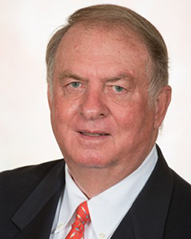
Innewvation-innoldvation: one man’s ceiling is another man’s floor.
The past couple of weeks I have been on the road. So much for the nice summer in Maine.
In the process, I have had the opportunity to get glimpses of what is going on in the guts of home building in the nation.
I have been reminded of several lessons learned long ago. Lessons old to me, but new to the current generation of home builders. Lessons that should have been passed on in the normal course of the industry’s generational turnover, but which never were for many.
The first lesson is one from a course in Systems Dynamics I took at MIT about 20 years ago. “Systems and Structures primarily determine outcomes; people have a secondary effect” was one, and its corollary “The definition of insanity is to think that doing the same thing over and over will give a different result” is the other.
The bottom line is that the rules of the game fundamentally determine the results (within a range). People can adjust the results somewhat, but to get a fundamentally different result you need to change some of the core fundamental rules of the game. It is that simple and also why change is so hard.
As I have written previously, after the downturn nearly a decade ago now, we had fundamental changes in the rules governing mortgage finance, the appetite of banks for real estate lending, the ascendancy of educational debt in the chase for college degree advantages that did not appear as promised, the decline of the perceived value of vocational training, the unexpected need of baby boomers to keep working to adjust for decimated retirement fund sources, and the loss of good paying middle class jobs.
All of these changed the supply and demand rules for housing, and have given us a perennial undersupply of housing, a consequential rise of housing sale and rental prices, a shortage of labor to build the houses, a concentration of desirable jobs in urban centers, and a persistent affordability and affordable housing crisis in many locales.
Although growing slowly, our housing production is significantly less than it historically has been and needs to be currently.
The changes have given us a new set of results. To get different results, new rules, paradigms and solutions are needed and innovation is the order of the day on multiple fronts in that quest.
So, my antenna has been up for where those innovations are occurring. A decade ago we were talking about where the ‘green shoots” of the recovery were popping up. Now it is where the “green shoots” of innovation are appearing.
Here are my postcards from those locations:
Denver, Colo.: Thrive Homebuilders is selling homes at a clip significantly higher than last year and the year before. However, production capacity was not keeping up and was stressing the production control system that the company had from slower, lower volume days.
An innovation was needed. The management of the company was smart enough to “know what they did not know” and reached out for help. In this case, the teaching of the slotting and controlled flow system I learned from Jack Robinson at Rayco and Dave Showers and Fred White at Wayne Homes nearly 20 years ago was the perfect tool for them to undertake the process control and improvements that were needed.
What I realized was that what was “old hat” for me (I had used the system multiple times and taught it to nearly two dozen others) was innovation for someone else.
“Inoldvation” (if there is such a word) for one is innovation for another. One man’s ceiling is another man’s floor.
The other note from the visit with Thrive was that their office is in a downtown office high rise, not the common location for a greenfield home builder. But they are there with a reason. It's a key to attracting bright millennials into the company.
Inside the offices, it reminded me of a visit I had with the (then) young Otter Box in Fort Collins at the start of the iPhone era. Adjustable height work-desks have many of the staff standing to work as part of a healthy work style; work spaces in a café style kitchen and other “casual” meeting venues make the place really feel like a 21st century workplace. The place buzzes.
If great talent is the juice that allows you to get the most out of the current set of rules until they can be changed, this place felt like a great prototype.
Denver, Colo.: The observation that even great-intentioned private builders like Thrive may not have been exposed to some of the best practices that the bigger builders long-ago learned was a theme that Noelle Tarabulski from Denver-based Builder Consulting Group took and worked with innovatively.
Many smaller builders don’t make it to the seminars where they are exposed to experts who know these practices. The distances are too far and the costs in time and money just don’t fit the budget. So, she decided to take the show to the builders using their HBA as the venue.
Called OpEx (for Operational Excellence), the traveling band of experts stakes out a full day program of presentations and round tables with builders. Think of the back-to-back-to-back exposures you might get from the presentations at a Builders' show or PCBC or a ULI spring or fall meeting. It is intense exposure that can help smaller builders get better and innovate in their own way.
If more than half of the new homes in the country are built by these folks, the leverage of bringing practices up to current standards is a huge innovation for those builders that will impact their bottom lines and move the industry as a whole forward.
The first OpEx is in Fort Collins, CO in August, and Noelle is booking HBAs at a rate of one per month across the country.
Like any new enterprise, I expect that there will be a learning curve. But that is the path of innovation and my hat is off to Noelle for taking a new idea that makes a difference and running with it.
Washington, DC:After my last article about the desperate need for a training program for construction trades, Dave Howard, whom I had known from a decade of work with the Urban Land Foundation, contacted me.
Now with the Home Builder Institute, based in DC, HBI (as they are known) is actively training people across the country with a particular focus on those coming out of the combat arms of the military. This seems like a win-win for filling the giant need for labor in the industry.
Pittsburgh, PA: I have known the folks at IBACOS in Pittsburgh for nearly two decades. Known for their building science work, particularly in building envelope, zero energy, and advanced HVAC work, it is one of the coolest spots in the country if you are into how to build houses smarter.
Located in an old industrial area that has become cool in the past decade, I noticed on a recent trip that across the street was the training facility for the local steelworker’s union. In a renovated old brick warehouse with very cool and modern “industrial chic” exterior flourishes, I watched old hand steelworkers training new millennials outdoors.
Across the street was the Pittsburgh Opera in a similarly renovated warehouse and driving by were driverless Uber cars being tested at a facility down the street.
Old tech meeting new tech on one hand; but making one of the roughest jobs you can imagine (steelworker) seem to be a seamless part of the new economy was the genius. Perceptions do matter. Architecture does help to create a new story from old. And maybe one or two more people will make the decision to become a steelworker because of it.
Innovation takes many forms from new technology, to old technology coming to someone who has never seen it. It can involve physical things, virtual things, and how we treat people and processes.
All will be part of the toolkit as we learn to deal with this new reality which defines the current state of housing in the US.
About George Casey

With decades of deep hands-on experience in operations and processes, business consultant and keynote speaker George Casey brings unparalleled insight to a variety of businesses to streamline operations, increase profits and long-term sustainability, especially to the residential development and home building industries.
Join Our Discussion




